Greek Pantheon
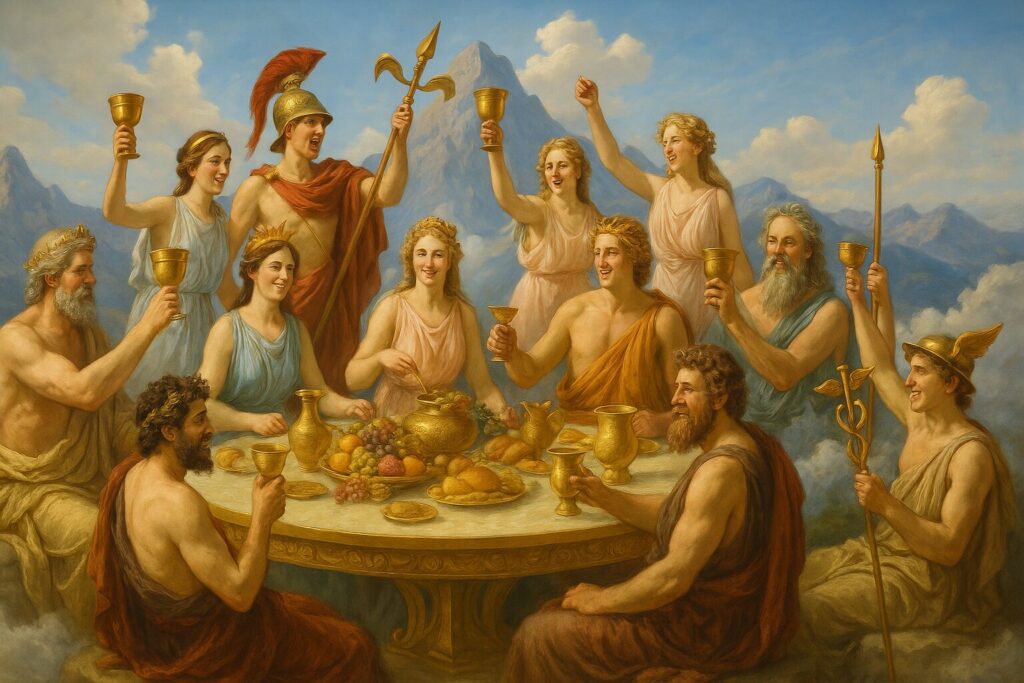
The 12 Gods Of Olympus
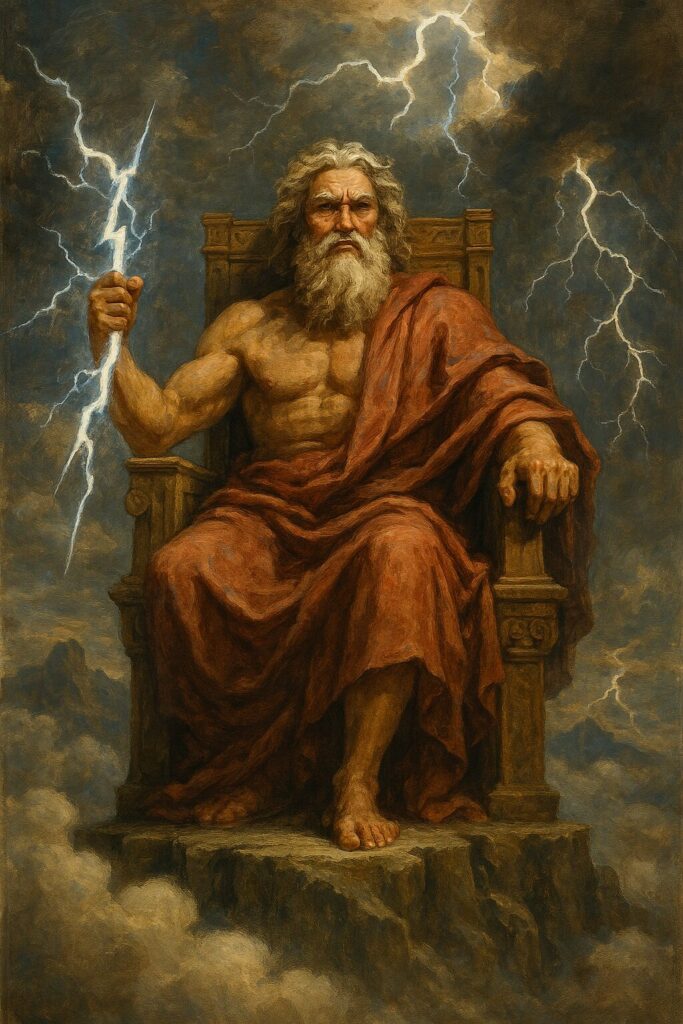
Zeus
The King of the Gods and ruler of Mount Olympus, Zeus is the god of the sky, thunder, and justice. He is often depicted holding a thunderbolt and is associated with law and order among gods and mortals. As the most powerful deity, he fathered many gods and heroes, often through his numerous affairs, which frequently led to conflicts with his wife, Hera. His symbols include the eagle, oak tree, and thunderbolt, representing his supreme authority over both the heavens and the mortal world.
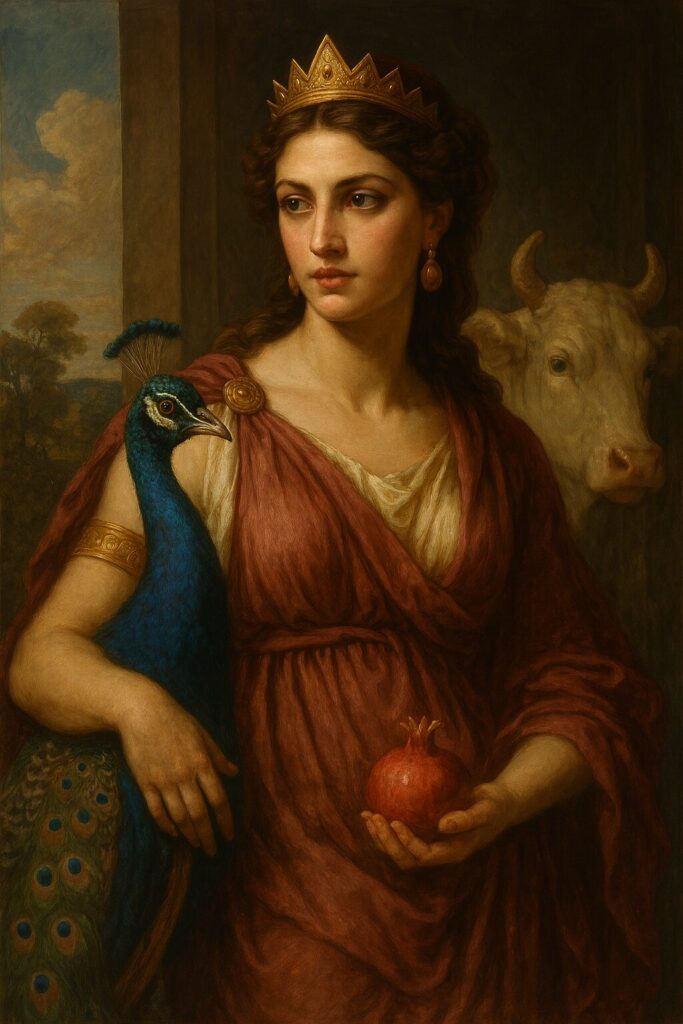
Hera
The Queen of the Gods and wife of Zeus, Hera is the goddess of marriage, family, and childbirth. She is known for her beauty and regal nature but also for her jealousy and vengefulness, particularly against Zeus’s many lovers and their offspring. Despite her often vengeful nature, she was revered as a protector of married women and a powerful deity in her own right. Her sacred symbols include the peacock, cow, and pomegranate, all of which emphasize her association with fertility and marital devotion.

Poseidon
The God of the Sea, earthquakes, and horses, Poseidon is one of the most powerful Olympians. He is often depicted wielding a mighty trident, which he uses to control the waters and stir up storms or create calm seas. He is known for his unpredictable temperament, much like the sea itself, and has had numerous affairs with both goddesses and mortals, resulting in many offspring, including the famous hero Theseus. His sacred symbols include the trident, dolphins, and horses, the latter of which he is said to have created.
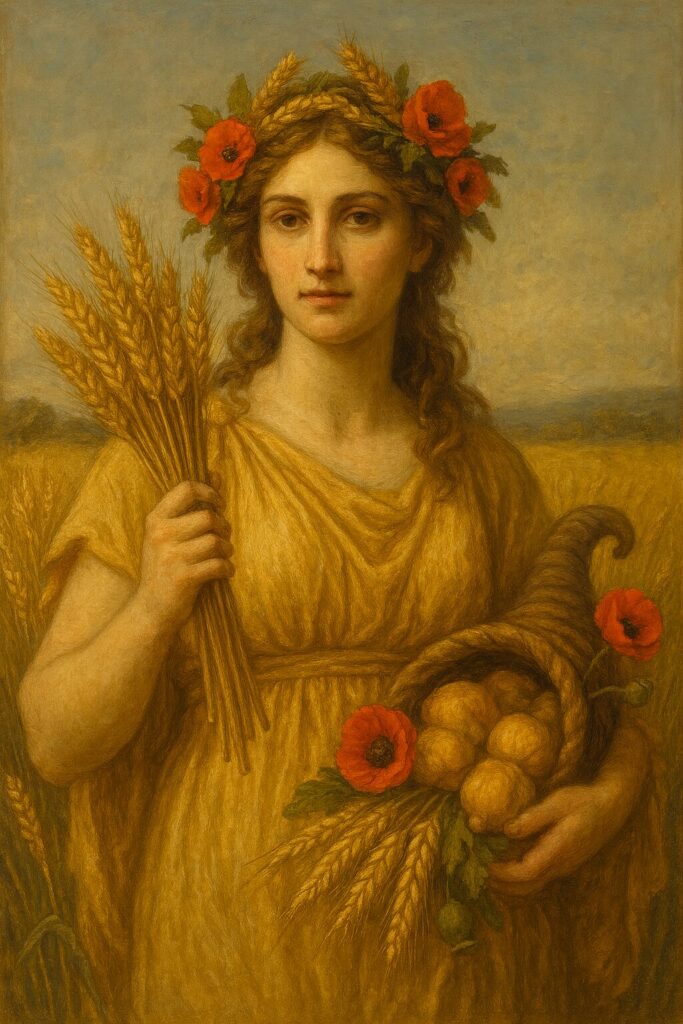
Demetra
The Goddess of Agriculture, fertility, and the harvest, Demeter is deeply connected to the cycle of life and death, particularly through her daughter, Persephone, whose abduction by Hades led to the creation of the seasons. When Persephone is in the underworld, Demeter mourns, and the earth experiences winter; when she returns, Demeter rejoices, bringing about spring and summer. Her symbols include wheat, the cornucopia, and the poppy, all of which emphasize her role as a life-giving deity.
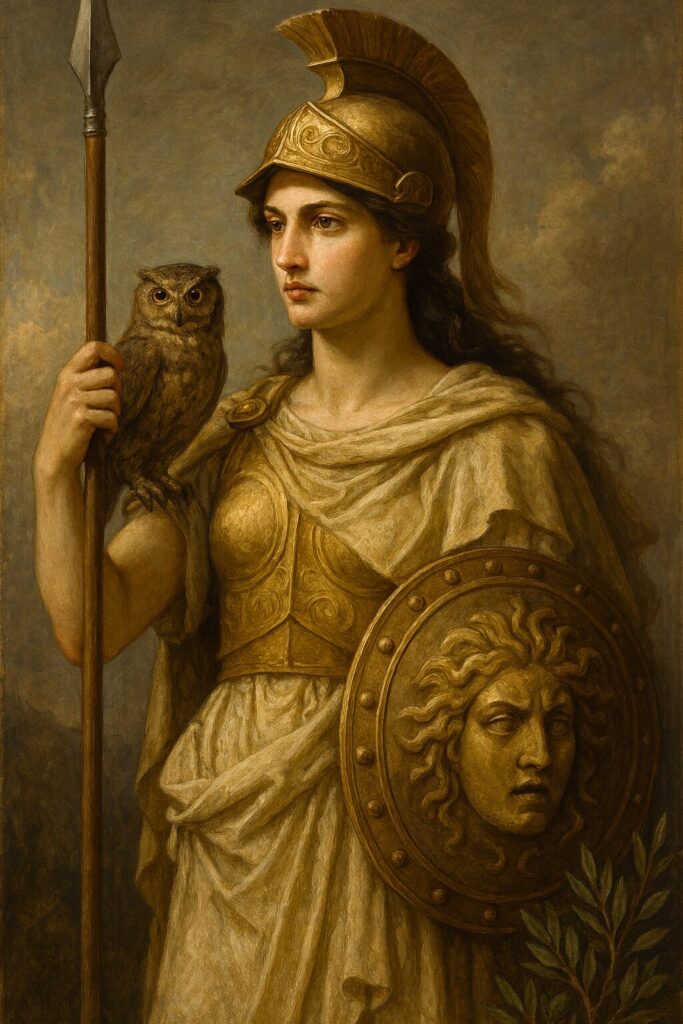
Athena
The Goddess of Wisdom, War, and Strategy, Athena is one of the most revered deities in Greek mythology. Born fully grown and armored from Zeus’s head, she represents intelligence, strategy, and skill in warfare rather than brute strength. She is also the patron goddess of Athens, where the Parthenon was built in her honor. Unlike Ares, who embodies chaotic war, Athena represents the disciplined and just aspects of battle. Her symbols include the owl, olive tree, and Aegis (a shield with the head of Medusa).
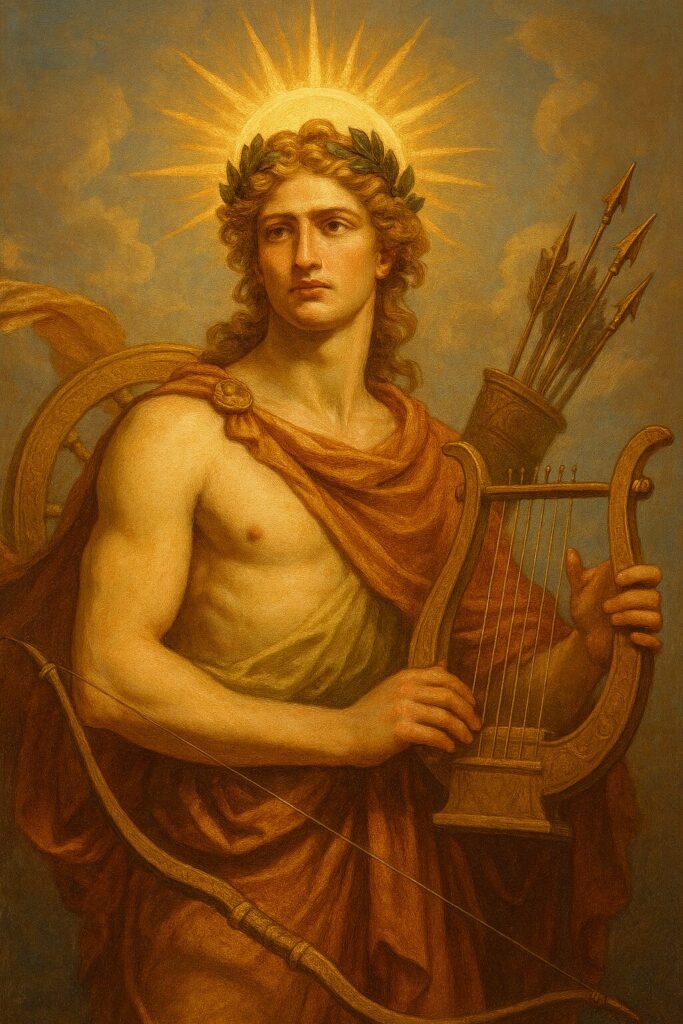
Apollo
The God of the Sun, Music, and Prophecy, Apollo is a multi-faceted deity associated with light, healing, poetry, and archery. He is the son of Zeus and Leto and the twin brother of Artemis. Apollo is the patron of the Oracle of Delphi, where mortals sought his guidance on the future. Known for his golden chariot, which he uses to pull the sun across the sky, he is also a god of medicine and plague, capable of both healing and bringing disease. His sacred symbols include the lyre, laurel wreath, and bow and arrows.
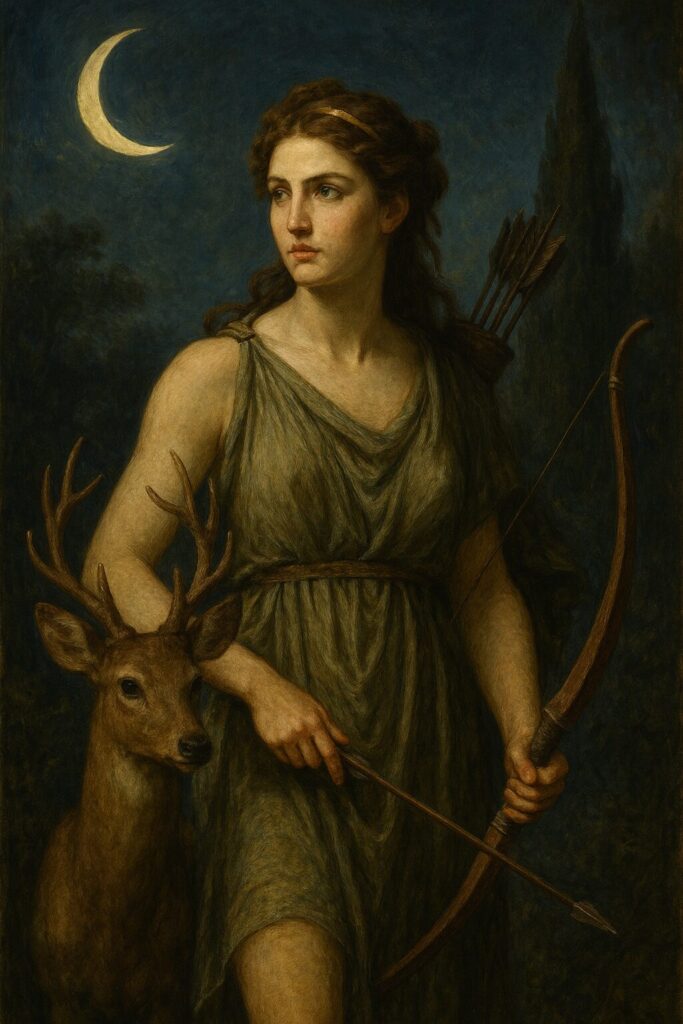
Artemis
The Goddess of the Hunt, the Moon, and Wilderness, Artemis is the twin sister of Apollo and a fierce protector of animals and young maidens. She is often depicted with a bow and arrows, accompanied by a deer. A sworn virgin, she is a symbol of independence and nature’s untamed beauty. Artemis was also a protector of childbirth and women, despite her own commitment to chastity. Her symbols include the crescent moon, hunting dogs, and the cypress tree.
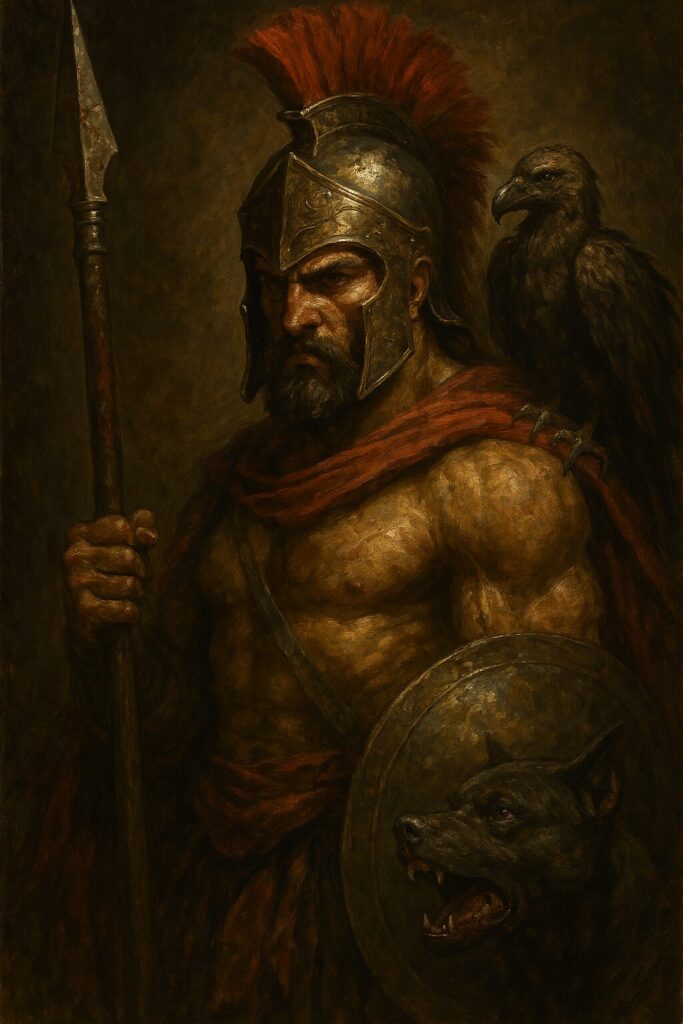
Ares
The God of War, Ares represents the brutal and chaotic side of battle. Unlike Athena, who embodies strategic warfare, Ares thrives in bloodshed and violence. He is often seen as a destructive and impulsive force, leading to a more negative perception among both gods and mortals. Despite this, he was deeply loved by Aphrodite, with whom he had several children, including Eros (Cupid). His symbols include the spear, helmet, vulture, and dog, all of which reflect his aggressive nature.
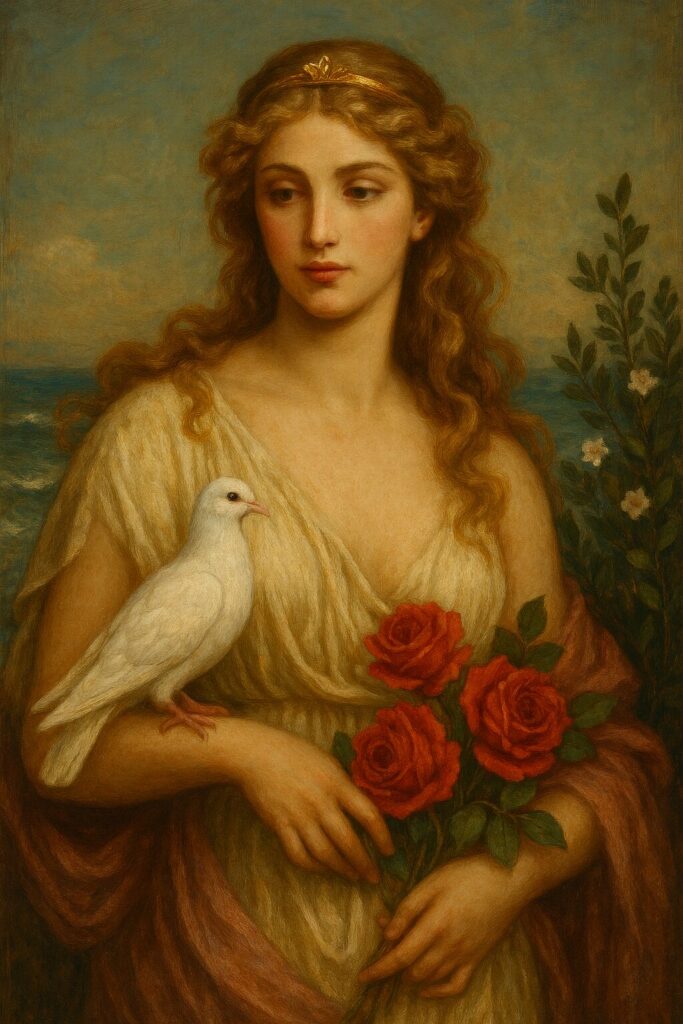
Aphrodite
The Goddess of Love, Beauty, and Desire, Aphrodite was said to have been born from sea foam and is one of the most enchanting Olympian deities. She embodies romance, passion, and physical attraction, influencing both gods and mortals alike. Though married to Hephaestus, she had numerous love affairs, most notably with Ares. She played a significant role in mythology, including initiating the Trojan War by awarding Paris the love of Helen. Her symbols include the dove, rose, and myrtle.
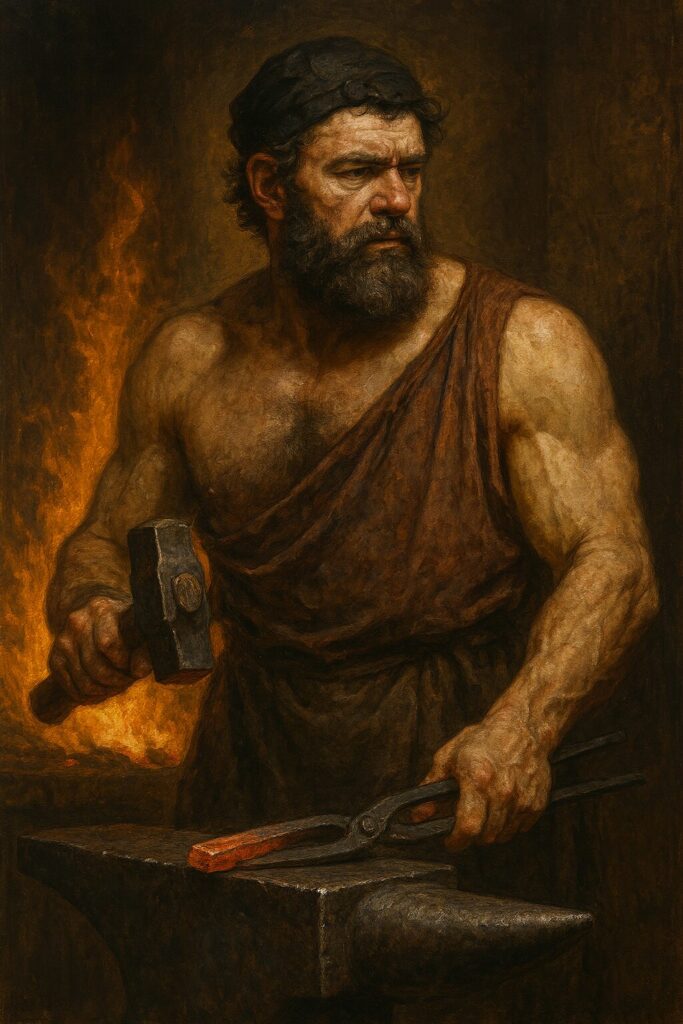
Hephaestus
The God of Fire, Blacksmithing, and Craftsmanship, Hephaestus is known for his unmatched skill in metallurgy and invention. Despite being physically disabled and considered unattractive by the other gods, he was highly respected for his craftsmanship, creating weapons and armor for the gods, including Zeus’s thunderbolt and Achilles’ armor. He was married to Aphrodite, though their marriage was troubled due to her infidelity. His symbols include the anvil, hammer, and tongs, representing his mastery of fire and metal.

Hermes
The God of Commerce, Travel, and Thieves, Hermes is known as the swift-footed messenger of the gods. He is also a trickster, known for his cleverness and cunning. As a guide for souls to the underworld, he played a crucial role in mythology. He is often depicted wearing winged sandals and a winged cap, allowing him to move swiftly between worlds. Hermes is also associated with trade, eloquence, and negotiation, making him a patron of merchants and travelers. His symbols include the caduceus (a staff entwined with two snakes), winged sandals, and the tortoise.
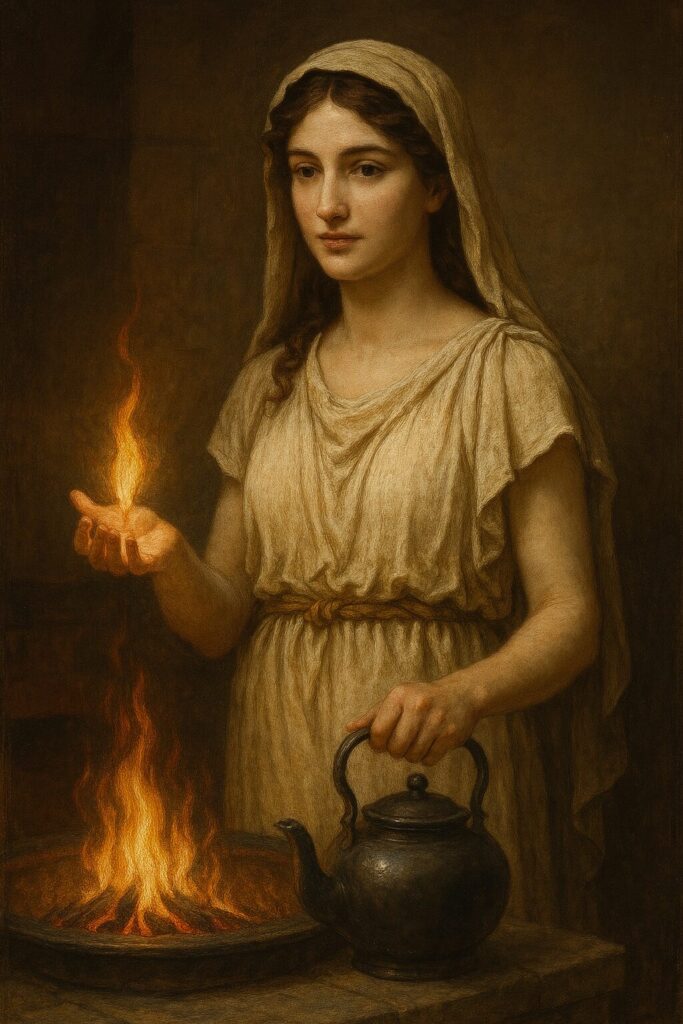
Hestia
The Goddess of the Hearth, Home, and Sacred Fire, Hestia is the gentlest and most peaceful of the Olympian deities, representing the warmth and stability of the home and family. She is the goddess of the hearth, the sacred fire that burns in households and temples, symbolizing hospitality, domesticity, and unity. Unlike the other gods, she avoided conflicts and intrigues, choosing a life of devotion and service. She was greatly respected by both mortals and deities, as every home and city-state in Greece had a hearth dedicated to her. Despite being courted by both Poseidon and Apollo, she swore an eternal vow of chastity, dedicating herself to keeping the divine flame burning. Because of her peaceful nature, she willingly gave up her seat on Mount Olympus to Dionysus, preferring to watch over the mortal world. Her symbols include the hearth, flame, and kettle, representing warmth, nourishment, and stability.